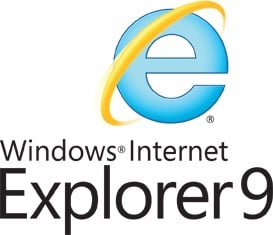Why you should care about IE9 on WP7

At Mobile Word Congress in Barcelona, Microsoft VP Joe Belfiore gave a demonstration of some of the new features coming to Windows Phone 7 in an update to come later this year. The touted features include multitasking, which is for some the Holy Grail of mobile platforms. Somewhat overshadowed by the multitasking features was the demonstration of Internet Explorer 9 for Windows Phone, which is to include many of the features of its desktop counterpart.
The real issue for some WPCentral readers is why they should care about Internet Explorer on Windows Phone? IE has long been the whipping boy among browsers, at least from a PC enthusiast’s standpoint. Lambasted for its lack of security and standards support, Internet Explorer has been losing market share to Google Chrome and Mozilla’s Firefox.
Follow the break to learn why Internet Explorer 9 is the single biggest feature coming to Windows Phone 7 in 2011, at least in this writers estimation.
Talking about web standards and HTML5 is a little ironic, as the HTML5 spec will not be a finalized standard for a few more years. Regardless of this fact, HTML5 is a big enough step forward that designers and web developers are using it to make sites that offer incredible functionality without sacrificing by using proprietary code or tools. For many site owners, HTML5 replaces four or five disparate pieces of the web development puzzle. I want to talk about a few of the key elements to HTML5, and what they mean to the end user.
Media & Graphics
One of those things that Apple’s iOS devices have been criticized about since their inception was the lack of Flash support. The obvious reason for this is the proliferation of Flash across a multitude of sites around the web. Truly though, Flash has always been about covering the limitations of HTML and making websites that are both attractive and functional.
HTML5 fills in the gaps of prior versions of HTML by offering a native “Canvas” that allows developers to write code that programmatically performs Flash-like animations. SVG (Scalable Vector Graphics) support allows drawing of shapes by defining points on a curve. This makes the code and content lightweight when compared to raster graphics, which require information on a per-pixel basis. HTML5’s native audio and video support negate the need for Flash-based audio and video players, though standards for audio and video are still being debated by the industry heavyweights.
Get the Windows Central Newsletter
All the latest news, reviews, and guides for Windows and Xbox diehards.
CSS3
Internet Explorer 9 for Windows Phone will also support the latest revision of Cascading Style Sheets (CSS3). Like HTML5, the CSS3 specification is not yet finalized by the World Wide Web Consortium (W3C). CSS is used primarily by web designers as a method of defining the positioning and style of various elements on the page. A lot of the CSS3 features are niceties for developer and designer types, but much of the specification makes for optimized code. With prior versions of CSS the simple act of creating a box with rounded corners required multiple boxes and images spliced and layered together. CSS3 supports these techniques natively, cutting what used to be ten to twenty lines of code by a factor of ten.
Additional Standards & Support
There are a number of additional technological goodies that will be supported in IE9 for Windows Phone including increased support for the Document Object Model (DOM), additional Event handlers, support for Geolocation, and Data URIs. All of these features will allow web developers to create standards-based web applications that function as well on Windows Phone 7 as they do on any other modern-era browser.
Hardware Acceleration
With all of the HTML5 and CSS3 native features that will be coming to Windows Phone, hardware acceleration is a key piece to the browser puzzle. With developers changing the way they do things in terms of using HTML5 instead of Flash or Silverlight, there is a lot of code being interpreted on the fly by the browser. Hardware acceleration uses the video chipset to handle the animation and re-drawing in order to make everything flow smoothly. The really cool thing is that hardware acceleration is only now coming to desktop browsers; making Microsoft ahead of the curve in the mobile space.
What about Flash and Silverlight
We don’t know for sure what Microsoft’s plans are for Flash and Silverlight support on Windows Phone 7. Both technologies have been mentioned in the past as something that was in the works, but the discussion has been quiet in recent months. In the long term HTML5 makes such plug-in based technologies obsolete; but for now Flash and Silverlight based sites are commonplace on the web. The topic of browser plug-ins for Windows Phone is something we’ll be listening for at MIX this month.
Conclusion
Make no mistake; IE8 to IE9 is as much an upgrade as Windows Mobile to Windows Phone 7, even more so IE7 mobile to its IE9-based successor. Not only will HTML5 and hardware acceleration make it possible for developers to build web applications that rival native apps on Windows Phone, but IE9 will allow Windows Phone users to utilize a host of web content that already supports HTML5 standards. Both Apple and Google already support HTML5 to some degree, and the proliferation of those platforms makes HTML5 an extremely attractive option for mobile developers.
